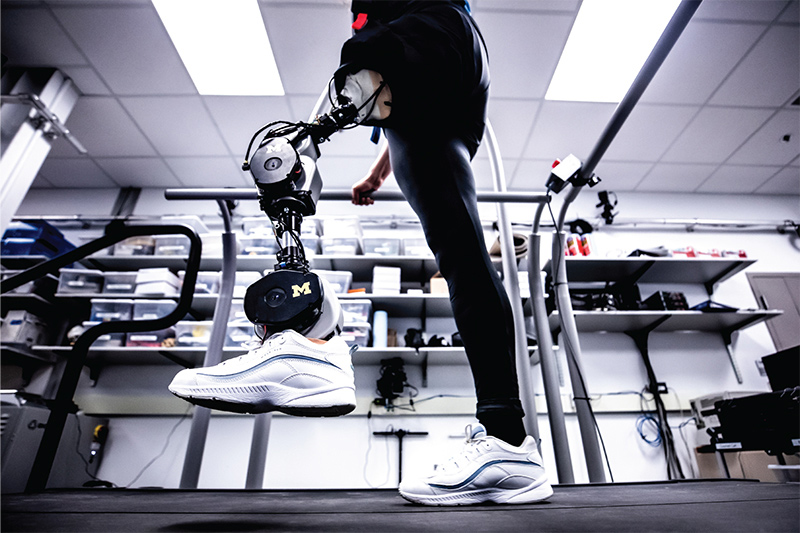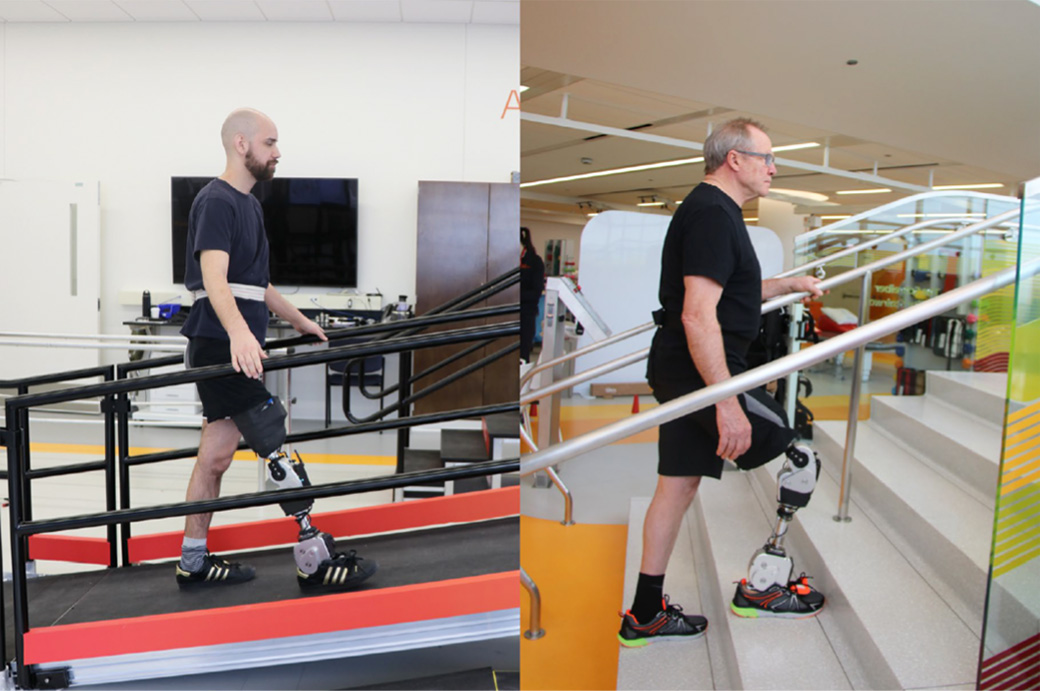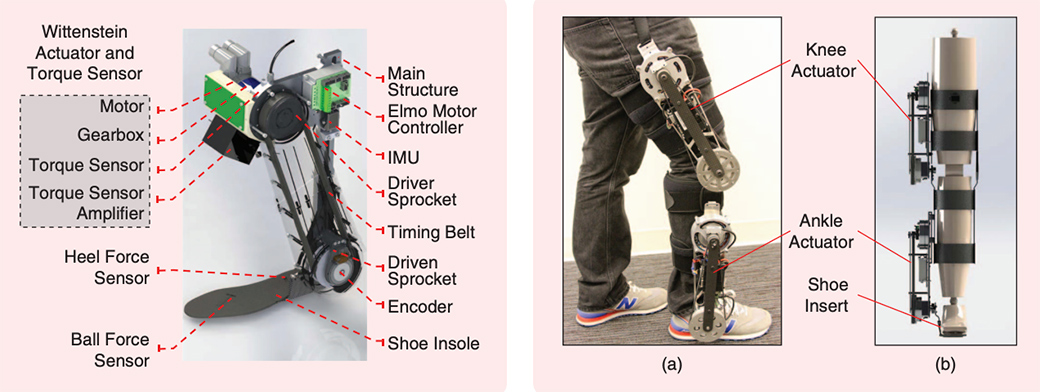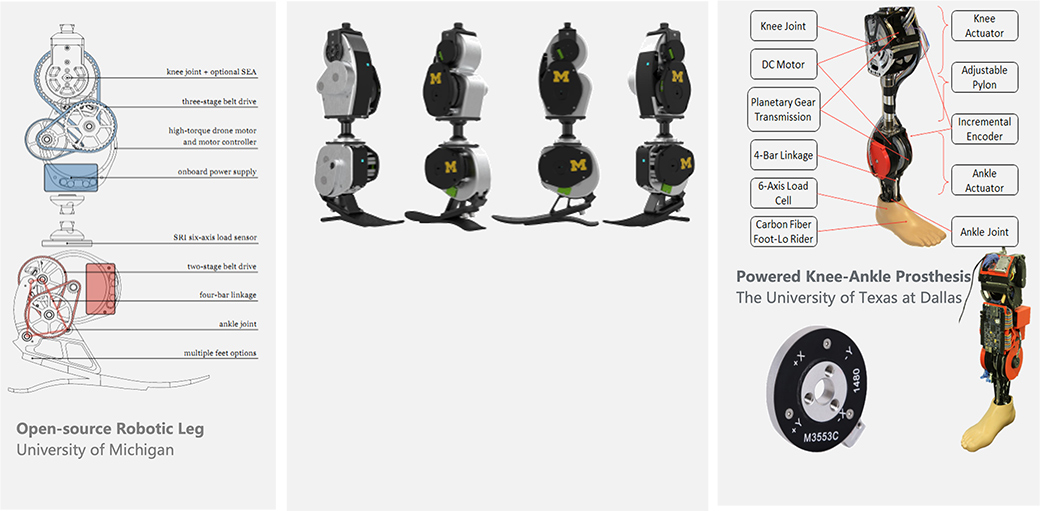“I’m looking to purchase a 6 DOF load cell and was impressed by the Sunrise low profile options. ”----a rehabilitation research expert

Image source: University of Michigan neurobionics lab
With the rise of artificial intelligence, researchers in the North America and the Europe have made impressive progress in the research and development of medical rehabilitation. Among them, artificially intelligent prostheses (robot prostheses) have attracted much attention. One of the key components of AI prostheses is the force control unit. The traditional prosthesis supports the user in a fixed manner, so the user's other limbs and body parts often need to cooperate with the rigid prosthesis to complete the action. Not only is the ability to move limited, but also the movement is incoordinate. It is easy to fall and develop secondary complications, creating more difficulties and challenges for patients. Different from traditional prosthetics, robotic prosthetics can provide users with active rather than passive balance support according to changes of road conditions and movements, allowing them to act more freely and improve their quality of life greatly.

Image source: Design and clinical implementation of an open-source bionic leg, Alejandro F. Azocar. Nature Biomedical Engineering volume.
According to statistics, there are at least 300,000 amputees in the US. In China, there are 24.12 million physically handicapped people, of which 2.26 million are amputees, and only 39.8% have been fitted with prosthetics. Statistics in the past two years show that in China the average annual number of new amputations is about 200,000 due to traffic accidents, industrial accidents, mining accidents and diseases. The number of amputations due to diabetes is increasing rapidly. Prosthetic limbs also need to be replaced as they age. In addition, patients with muscle weakness, muscle atrophy, or hemiplegia also need medical aids such as exoskeletons to help them stand or move again. Therefore, more efficient and reliable smart prosthetics and smart exoskeletons have great market demand and social significance.

Image source: UT Dallas locomotor control systems lab
To realize the force control of intelligent prosthetics, 6 DOF force sensors are needed to sense changes in road conditions in real time and precisely control the magnitude of the force. The complexity of road conditions, the variability of actions and integration constraints put very high requirements on 6 DOF force sensors. Not only must it meet the range requirements of force and moment, but also be lightweight and thin. Users said that after investigation, they found that, on the market, only SRI M35 ultra-thin series 6 DOF force sensors can meet all these requirements.
The M35 series includes 18 models, all of which are less than 1cm thick, and the smallest is only 7.5mm thick. The weights are all less than 0.26kg, and lightest is only 0.01kg. Non-linearity and hysteresis is 1%, crosstalk less than 3% and are built with steal on metal foil strain gauge technology. The excellent performance of these thin, light, compact sensors can be achieved because of the 30 years of design experience of SRI, originating from the automobile safety crash dummy and expanding beyond. These technologies are now being used in the research and development of intelligent prosthetics to escort the safety of more people.

Image source: University of Michigan neurobionics lab, locomotor control systems lab
Besides, the price for SRI sensors is very competitive comparing with those from other major force sensor manufacturers. With its strong technical strength and affordable price, the low-key SRI brand has been spread by word of mouth and is deeply loved by the top medical rehabilitation research laboratories and robotic prosthetics industry. In the past 7 years, bionics and biomechanics researchers and engineers from the United States, China, Canada, Japan, Italy, Spain and other countries have used SRI ultra-thin sensors for innovative research, published a large number of academic papers and achieved remarkable progress.
In the next article, we will introduce the application of SRI M35 ultra-thin series in the field of medical rehabilitation. Including the latest research results of intelligent prosthetics and intelligent exoskeletons published in Nature and IEEE conference journals. Stay tuned!
Reference:
1. Patient Population And Other Estimates Of Prosthetics And Orthotics In The U.S.A., Maurice A. LeBlanc, M.S., C.P.
2. Design and clinical implementation of an open-source bionic leg, Alejandro F. Azocar. Nature Biomedical Engineering volume.
3. Design and Validation of a Torque Dense, Highly Backdrivable Powered Knee-Ankle Orthosis. Hanqi Zhu, 2017 IEEE International Conference on Robotics and Automation (ICRA)

